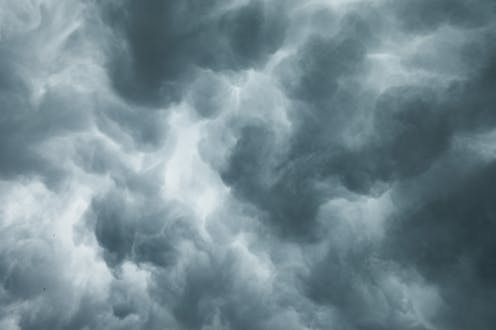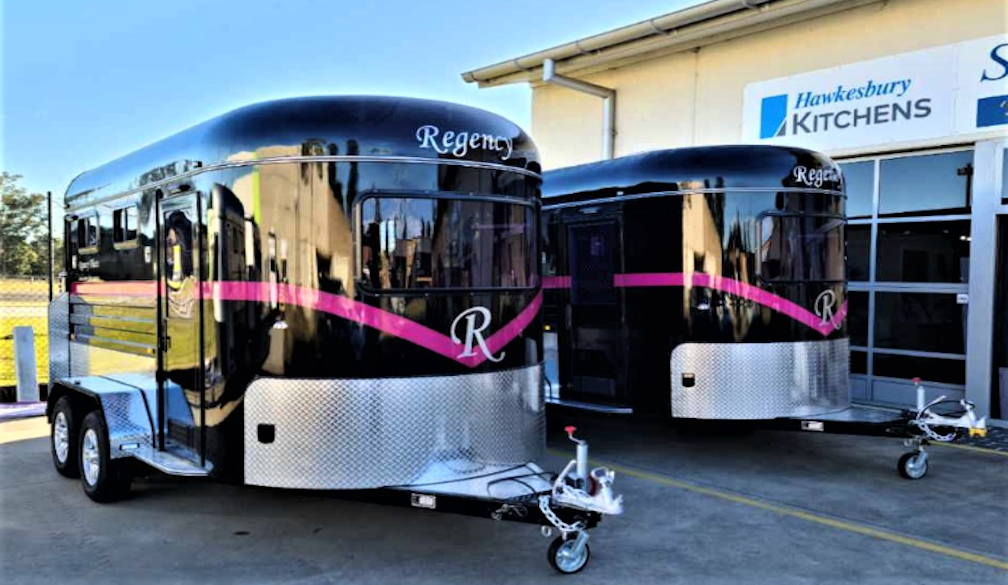We can’t say yet if grid-breaking thunderstorms are getting worse – but we shouldn’t wait to find out
- Written by Andrew Dowdy, Principal Research Scientist, The University of Melbourne

On February 13, six transmission line towers in Victoria were destroyed by extreme wind gusts from thunderstorms, leading to forced electricity outages affecting tens of thousands of people. The intense winds knocked trees onto local power lines or toppled the poles, which caused about 500,000 people to lose power. Some people went without electricity for more than a week. A month earlier, severe thunderstorms and wind took out five transmission towers in Western Australia and caused widespread outages.
Intense thunderstorm events have made news in recent years, including the January 2020 storms that caused the collapse of six transmission towers in Victoria. Perhaps the most far-reaching storms were those in 2016, when all of South Australia lost power for several hours after extreme winds damaged many transmission towers.
So are these thunderstorms with extreme winds getting worse as the climate changes? It’s possible, but we can’t yet say for sure. That’s partly because thunderstorms involve small-scale processes harder to study than bigger weather systems.
How can wind topple a giant transmission tower?
Many people saw the photos of transmission towers bent like thin wire and wondered how it was possible.
The reason is physics. When wind hits a structure, the force it applies is roughly proportional to the wind speed squared. When wind gusts are stronger than about 100 kilometres per hour, even just for a few seconds, there can be a risk of damage to infrastructure.
Direction matters too. Wind has greater force when it blows more directly towards a surface. If strong winds blow from an unusual direction, risk of damage can also increase. Old trees, for instance, may be more firmly braced against prevailing winds – but if storm winds blow from another direction, they might topple onto power lines.
On February 13, a strong cold front was approaching Victoria from the southeast, bringing thunderstorms with extreme wind gusts over 120 km/h after a period of extreme heat. Thunderstorms can create extremely strong and localised gusty winds, sometimes called “microbursts” due to cold heavy air falling rapidly out of the clouds. These winds were enough to bend towers and topple trees and poles.
Are these thunderstorm winds getting worse?
Scientific evidence clearly shows climate change is steadily worsening hazards such as extreme heatwaves and bushfires, which can damage our grid and energy systems.
On balance, evidence suggests tropical cyclones may become less frequent but more severe on average. All but one of Australia’s tropical cyclones this summer have been severe (Category 3 or higher).
But we aren’t yet certain what climate change does to extreme winds from thunderstorms.
This is because high-quality observations of past thunderstorms are relatively rare, with large variability in how often storms occur and their severity, and because climate models have difficulties simulating the small-scale processes which give rise to thunderstorms.
The evidence we do have suggests continued climate change may potentially increase the risk of extreme winds from thunderstorms. This is partly due to more moist and unstable air, which are essential for thunderstorms to form. We think these conditions could occur more often with climate change, in part because warmer air can hold more moisture.
We also know the severity of thunderstorms can be affected by vertical wind shear, which is the way the wind changes with height. To date, we’re less certain about how wind shear will change in the future.
Recent research by coauthor Andrew Brown and the lead author suggests climate change is likely causing more favourable conditions for thunderstorms with damaging winds, particularly in inland regions of Australia. But the methods used for these predictions are new, meaning more research needs to be done for further insight on what climate change will do to extreme winds.
We shouldn’t wait to find out
Modelling extreme wind gusts is still in its infancy. But given so much of our electricity grid is exposed to extreme winds, it’s important we try to address this gap in our knowledge.
It’s safe to say we should treat these storms as a warning. We should factor the risks from extreme winds into how we design our energy systems. It’s especially important as we build a grid able to handle clean energy that we anticipate these kinds of risks from extreme weather.
Hardening the grid by burying powerlines and removing vegetation isn’t the only option. We could build a smarter grid, with distributed renewables and energy storage including large as well as relatively smaller (e.g., community-level or household-level) batteries, giving the grid greater resilience including against extreme weather events.
In the wake of South Australia’s devastating 2016 grid outage, authorities moved to boost grid resilience in this way, building big batteries, more renewables and new interconnectors, while Australia’s energy market operator AEMO changed how it dealt with windfarms if grid issues occur.
Read more: What caused South Australia's state-wide blackout?
Power grids are the largest machines in the world. As we move to a clean energy grid, we face complex challenges – not just in building it, but in protecting it against extreme weather.
We would be well served if we work to better understand the risks of compound events, such as combinations of extreme winds, fires or floods hitting a region around the same time.
We also need accurate predictions of risks shortly before extreme winds or other disasters strike, as well as effective long-term planning for the risks likely to increase due to climate change or during different climate cycles such as El Niño and La Niña.
If we get this response wrong, our energy bills will rise too much and, worse, we still might not have a more resilient system. Since our energy networks are regulated by a complex set of government rules, reform is not just something for industry to address. It must ultimately be led by government – and guided by evidence.
Read more: Victoria's power outage could have been far worse. Can we harden the grid against extreme weather?
Authors: Andrew Dowdy, Principal Research Scientist, The University of Melbourne



















